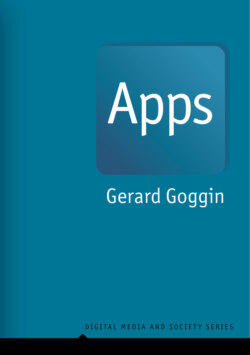Читать книгу Apps - Gerard Goggin - Страница 7
chapter one Introduction
ОглавлениеOn Saturday, June 20, 2020, US President Donald Trump was looking forward to a campaign rally in Tulsa, Oklahoma, which he had been widely publicizing via his Twitter account. Only a disappointing 6,200 supporters turned up, leaving many empty seats conspicuously vacant in a stadium with a capacity of 19,000. The shortfall was credited to a prank by TikTok users and K-pop fans, who apparently booked half a million tickets for the rally, causing rally organizers to wildly overestimate attendance (Andrews, 2020). While the exact nature of this digital activism success is tricky to pin down (Madison & Klang, 2020), there’s no doubt that this was an important moment of worldwide recognition of the influence of an app.
From mundane, everyday videos of teens idling and improvising, TikTok quickly established itself as major force in popular culture, especially during the COVID-19 pandemic, gaining a reputation for its signature abbreviated, hilarious, and whip-smart videos. Like YouTube before it, TikTok gained a following across many countries. Rajiv Rao, contributor to the Indian tech blog ZDNet, sung its praises: “TikTok introduced India to everyday stars from small towns and villages, and across genders, classes, and castes” (Rao, 2020). TikTok’s vibrant base of users provided a platform to social activism, a high-water mark being the #BlackLivesMatter hashtag, which exceeded 12 billion views in mid-2020, before the prank on Trump’s Tulsa event. Along the way, TikTok has been embroiled in considerable debate on its conservative and narrow norms of gender, race, class, and money—and hence on its contradictory role in reproducing and potentially supporting challenges to inequality and injustice (Kennedy, 2020).
Yet this flowering of cultural activity threatened to come juddering to a halt with India’s June 2020 ban on TikTok and on 58 other Chinese apps over data security concerns. Hot on the heels was Trump, with his August 2020 executive orders that blocked TikTok and WeChat from US app stores and processed transactions of US citizens, then required TikTok to be sold to US interest (or face a ban).
The spectacular career of TikTok shows us only one facet of the omnipresent media and of the cultural phenomenon that is apps. Many people around the world use apps in a myriad of ways—to go to sleep, wake up, plan and manage their daily routines and unexpected events, track and guide their bodies, engage in relationships, or negotiate food, work, health, finances, pleasures, aversions, annoyances, and many other aspects of personal, public, and social life. During the COVID-19 pandemic in 2020–2021, apps have come even more to the fore, especially as a technology of choice, expectation, or—as with infectious disease—contact, tracking, and tracing and as a legal requirement and instrument of population and health surveillance and control.
The central argument of the book is that apps represent a pivotal sociotechnical development in a key phase of digital media development. You can see apps as the hinge between two stages of recent media and communication. On the one hand, there are the visions and realities of the mobile, cyber, and online societies, which people envisaged from the late 1980s through to the early 00s. On the other hand, there are the imaginaries and materialities of pervasive media and immersive digital societies, which emerged internationally in the 2010s and onwards, in all their different forms and inequalities.
Apps bring together mobile phones and the Internet; software, computational, data, and hardware developments; web technologies, including the mobile web and what was briefly called Web 2.0; locative technologies; wearable devices; and connected cars, homes, and other environments. Great numbers of users access social media via mobile apps; but the two things are different. Apps provide bridges across the messy ecologies of media, technology, environments, and bodies. Yet apps also represent a litmus test for the shortcomings, limits, edges, and inequalities of digital media’s diffusion and social functions. While apps can ease users’ way into digital cultures, they also often fail or fall short; added to which, apps are often unavailable or too expensive. The apps system can be wasteful and amplify the environmental problems of smartphones and other digital technology. And apps can exacerbate digital exclusion and inequality just as much as they extend access and social participation.
As a guide to understanding the teeming and complex area of apps, the book is pitched at readers who would like a better understanding of apps as part of media, communication, culture, and society. It is aimed at university students of all levels, on programs from undergraduate through masters to doctoral. The book also provides a theoretically informed state-of-the-art account for researchers who study apps across a range of disciplines and fields. In the process, it seeks to lay out and discuss the pivotal role of apps in various contests over social futures in the emerging next-generation Internet, mobile technologies, the Internet of Things, AI and machine learning, automated technologies, platforms, and data cultures and infrastructures.
